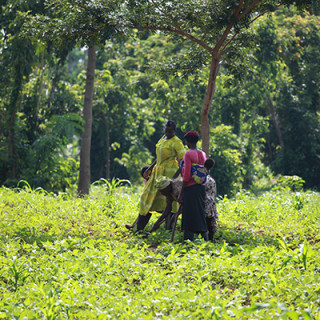Shrinking resource margins in Sahel region of Africa
The need for food, animal feed and fuel in the Sahel belt is growing year on year, but supply is not increasing at the same rate. New figures from 22 countries indicate falling availability of resources per capita and a continued risk of famine in areas with low ‘primary production’ from plants. Rising temperatures present an alarming prospect, according to a study from Lund University in Sweden.
The research has investigated developments between the years 2000 and 2010 in the Sahel belt, south of the Sahara Desert. Over this ten-year period, the population of the region grew from 367 million to 471 million. With this, the need for food, animal feed and fuel increased significantly. According to the study, the rate of increase was 2.2 per cent a year over the ten-year period.
“However, the production of crops did not increase at the same rate; in fact, it remained essentially unchanged”, said Hakim Abdi, a doctoral student in physical geography and ecosystem science at Lund University.
According to the study, this is a worrying trend in the light of climate change and population forecasts of close to one billion people in the region by 2050. The situation means that the margin between supply and demand for primary production is shrinking year on year.
“The relationship between primary production and consumption serves as a measure of the vulnerability of a region.”
In order to analyse the trend, the researchers used remote analysis and satellite images to calculate annual crop production in 22 countries in the Sahel region, and compared the figures with socioeconomic data on population growth and consumption of food, animal feed and fuel. The relationship between these two factors – primary production and consumption – serves as a measure of the vulnerability of a region from a socioecological perspective.
The results of the study show that consumption in the year 2000 comprised 19 per cent of total primary production in the area. Ten years later, consumption had increased to 41 per cent of total primary production.
A key question in this context is how long the margin can continue to shrink. The researchers noted that the region is already under pressure because of its susceptibility to drought, as demonstrated by a long series of famines over recent decades. Climate change further increases the vulnerability of the Sahel, in the view of the researchers. According to a number of different forecasts, harvests will be reduced as a result of higher air temperatures, despite the fact that the Sahel is predicted to receive more rain in the future.
Text: Lena Björk Blixt






